The draft is over and 217 young players are newly affiliated with 31 different NHL organizations. Outside of three to six of those players, who could jump right into NHL lineups in the fall, we will not know whether the vast majority of those players are draft successes for two, three, four, or five years.
The lack of clear foresight aside, we should still be able to judge draft classes at least in terms of expected value. In some cases, we can look at strategy as well, although the way the board shakes out based on the picks that came before, we can rarely truly discern what a club was trying to do, but only what they were able to do.
I had hoped that we would be able to provide an average Overall Future Projection of the various draft classes, but there are a few picks from the high school ranks, the NAHL and a few European junior leagues for whom we lack enough information to give a full grade, so we will focus on where we had players ranked as we assess the draft haul of each team, as we run division-by-division through the NHL.
Here is the Metropolitan Division
| Carolina Hurricanes |
|---|
| 1 (2) Andrei Svechnikov, RW, Barrie (OHL) - ranked 2nd |
| 2 (42) Jack Drury, C, Waterloo (USHL) - ranked 66th |
| 4 (96) Luke Henman, C, Blainville-Boisbriand (QMJHL) - ranked 156th |
| 4 (104) Lenni Killinen, RW, Blues U20 (Jr. A SM-Liiga) - ranked 137th |
| 6 (166) Jesper Sellgren, D, Modo (Allsvenskan) - ranked 207th |
| 7 (197) Jacob Kucharski, G, Des Moines (USHL) - not ranked |
For starters, a heartfelt congratulations are in order to the Carolina Hurricanes, their employees and their fans, as they did not overthink the #2 selection in the draft and walked away with the best forward money couldn’t buy in Andrei Svechnikov. In his first year in North America, he scored 1.2 points per game for Muskegon of the USHL in his age 16-17 season. After that, he moved up to the OHL and put up over 1.6 points per game for the Barrie Colts, despite missing time to the WJC and assorted injuries and suspensions. I am not saying we can expect two points per game as a rookie next season for the Hurricanes, but I am saying that he will be a rookie next season for the Hurricanes, and 20 goals is my minimal projection. He can play at both ends, but I expect him to be somewhat sheltered as a rookie. He is going to be very good for a long time. Moving on to the rest of the draft class.
After Svechnikov, the Hurricanes selected three more forwards, one blueliner and a goalie. Considering that the strength of the organization is on the blueline and most of their defenders are still rather young, that was a good strategy to take. Unfortunately, while I can say good things about the rest of the players that were drafted by Carolina, I cannot say that they selected the best player on the board at any other slot. Jack Drury is a good player with deep NHL bloodlines. He does a lot of things well. The points he put up for Waterloo were spectacular. On the other hand, way too many of those points were second assists and/or power play points. He is generally not the engine that makes the offense run. Just looking at the USHL, I would have taken either Blake McLaughlin or Sampo Ranta at that spot.
The Hurricanes did not have a third round pick, but selected twice in the fourth. The first pick there was used on Luke Henman, an athletic center from Blainville-Boisbriand in the QMJHL. He is an undersized playmaker, who performed well enough as a rookie in the Q this year and then upped his stock with a very good showing at multiple stations at the Draft Combine. Staying just with forwards from the Q, I would have preferred Dmitri Zavgorodny or Anderson MacDonald. But for those last two picks, it seems like the Hurricanes, with a management team that has not yet spent much time together, heavily weighted combine performance. With their second fourth rounder, the Canes finally took a non-combine player, grabbing Lenni Killinen from their usual stomping grounds in Finland. An explosive skater with promising offensive tools, Killinen put up respectable point totals in the Finnish junior ranks, but we would have preferred one of Ville Petman, Arttu Nevasaari, or Kristian Tanus, among young Finnish forwards.
Jesper Sellgren makes for a nice story as their sixth round pick. In his third year of eligibility, he was named to the Swedish team for the WJC. He is a very good skater and exhibits very good hockey sense, but his ceiling is limited. A reasonable pick in the sixth round, no doubt, but among Swedish netminders, fellow ’98 birthdate Henrik Malmstrom, would have been our pick there. Finally, in the seventh round, the Hurricanes added another netminder to their stable. Jake Kucharski has a lot of tools and can look very good at times, such as his performance in the USHL Top Prospects Game. But he could not keep the job in Des Moines, which brought in Roman Durny from Slovakia after the WJC. Kucharski scarcely played from there on out. This was a down year for netminder in the USHL, but I would have been inclined to gamble on one of Keegan Karki or Vincent Purpura instead. Your mileage may vary. In total, I cannot truly fault the Hurricanes for their draft picks. I don’t love it, but they did under circumstances (new management group) that do not often allow for exemplary draft planning.
OFP - 53
| Columbus Blue Jackets |
|---|
| 1 (18) Liam Foudy, C, London (OHL) - ranked 25th |
| 2 (49) Kirill Marchenko, LW, Mamonty Yugry (MHL) - ranked 34th |
| 3 (80) Marcus Kallberg, RW/LW, Leksands IF J20 (SuperElit) - unranked |
| 6 (159) Tim Berni, D, GC Kusnacht Lions (NLB) - unranked |
| 6 (173) Veini Vehvilainen, G, Karpat (Liiga) - unranked |
| 7 (204) Trey Fix-Wolansky, RW, Edmonton (OHL) - ranked Honorable Mention |
As a testament to the Blue Jackets history of going away from the so-called “consensus”, the example always brought up is when they selected Pierre-Luc Dubois third overall in 2016 instead of Jesse Puljujarvi, who was ranked third by literally everyone else. It is still early, but that pick looks pretty good so far for GM Jarmo Kekalainen. That, and the relative success of other recent unheralded prospect acquisitions by Columbus such as Markus Nutivaara (7th round, 2015) or Markus Hannikainen (UDFA, 2015), suggest that we reserve judgement after the Jackets only selected two players we had ranked in our top 217, and only one more who made our top 300. The third round pick, Marcus Karlberg, was the biggest head scratcher of the lot. He put up great numbers in the SuperElit, but he is tiny, and outside of his hockey IQ, lacks tools that project to above average.
Their first sixth rounder, Tim Berni, is an accomplished young defender from Switzerland, who did not look completely overwhelmed at the last WJC, but similarly did not show much to suggest a surefire NHL upside is within. There is some promise there, but I would want to see him do something at the top flight in Switzerland. All of his success thus far has come in the junior ranks, or in the second tier. The other sixth rounder, a rare Finnish pick by Kekalainen, is someone I can get on board with. To be completely honest, we have had Vehvilainen ranked in previous drafts, but left him out this year, his fourth of draft eligibility. Mostly, we figured if his amazing run at the WJC in 2017 was not enough to get him noticed, what else could he do. He is borderline undersized by modern netminding standards, but he dominated in the top men’s league in Finland and then led Karpat to the Liiga championship while still mourning the death of his father. He was also named the top goaltender in Liiga. Not every goalie with that hardware makes it in the NHL, but some (Tim Thomas, Kari Lehtonen, Antti Raanta, Miikka Kiprusoff, etc.) do. Trey Fix-Wolansky, the Columbus draftee we listed as an honorable mention selection, does not look like a good player, as he is short and stocky, and he is not the greatest skater, but he is very strong on the puck and has finished first or second in scoring for the woeful Edmonton Oil Kings in each of the last two seasons. So those are the picks that are off our boards. Despite not having the full-throated backing of the McKeens scouting staff, we can see good reasons for liking each of them (OK, maybe not Karlberg).
Thankfully, we really like their first two picks. Liam Foudy was a classic late riser. He began the season in a bottom six role with the London Knights, but when the perennial powerhouse decided that this was not going to be their year, a few veterans were traded away and Foudy ascended way up the depth chart. And he excelled. Over the second half of the season, he was one of the more electric players in the OHL, and backed it up with strong performances in the CHL Top Prospects Game as well as at the WU18s. He also has a strong case to be proclaimed the best athlete in the draft class. Kirill Marchenko was someone who drew mixed reviews from our Russian-based scouts, but raised his play for international events. He has a great skill set and fantastic size and could project to nearly any role down the road. The Blue Jackets are certainly an enigmatic team when it comes to scouting, but they are correct more than their fair share of the time. I wouldn’t put it past them to surprise again.
OFP – 52.25
| New Jersey Devils |
|---|
| 1 (17) Ty Smith, D, Spokane (WHL) - ranked 15th |
| 4 (110) Xavier Bernard, D, Drummondville (QMJHL) - ranked 71st |
| 5 (136) Akira Schmid, G, Langnau U20 (Elite Jr. A) - ranked Honorable Mention |
| 5 (151) Yegor Sharangovich, C, Dynamo Minsk (KHL) - ranked Honorable Mention |
| 6 (172) Mitchell Hoelscher, C, Ottawa (OHL) - ranked 134th |
| 7 (203) Eetu Pakkila, LW, Karpat U20 (Jr. A SM-liiga) - unranked |
One year after injecting a boat load of talent into the organization thanks not only to owning the number one pick in the draft, but making 11 total selections, this year, the Devils exhibited a magnificent turnaround and ended up trading away both their second and third round picks, as part of packages for Michael Grabner, and Sami Vatanen. Considering that the team still has the young core drafted in 2017 as well as a surprise playoff berth in their recent past, it’s a pretty good trade off. And even picking 17th this year, in a deep draft for defenders, the Devils were able to add another high end talent to their system, a player who many had projected to be taken in the top ten. Ty Smith, while small, is an excellent puck mover and plays an advanced positional game in his own end. In league play, he has been very effective at winning the puck back for his team, although he has had his bumps in the CHL Top Prospects Game as well as at the WU18s. Still, between his skating, puck skills, and high, high hockey IQ, there is potential for a future first pairing defender.
When they finally selected a second player, 93 picks later, the Devils were fortunate to get late Xavier Bernard, a player who looks much different than Smith, but has similar attributes. He is a smooth skater, can make the basic passes, and exhibits promising hockey IQ. On the other hand, Bernard is not a natural puck mover, but has much more impressive size and knows how to utilize it. New Jersey went to Europe with both of their fifth round picks, both times taking players from smaller hockey nations who have plenty of international experience. Akira Schmid started his draft off with a bang, thanks to a stellar showing at the Ivan Hlinka tournament. He was then one of the top goalies in the Swiss junior ranks, but struggled at the WU18s to end the year. He has enough size and athleticism to be a decent gamble. Yegor Sharangovich was in his third year of eligibility and has three WJCs (one in the second tier) under his belt for his native Belarus. He played a depth role for the Dynamo Minsk KHL team this year, but has flashed impressive goal scoring ability in the past.
Sixth rounder Mitchell Hoelscher is slight, but wiry strong. His production with the Ottawa 67s was not much in his first full season in the OHL, but he is a good skater, and plays an intelligent brand of hockey. He has energy line upside. With their final 2018 selection, the Devils popped Finnish winger Eetu Pakkila, a winger with great feet and a good shot. Despite decent numbers for Karpat’s U20 team, Pakkila slipped under the radar due to rarely being considered for international duty for any age group in Finland. While one could quibble about the upside about their late round selections, with the exception of Hoelscher, the Devils did a nice job of drafting players with a history of production in their local leagues. And without exception, each player has at least one attribute that suggest NHL upside.
OFP – 52.5
| New York Islanders |
|---|
| 1 (11) Oliver Wahlstrom, RW, USNTDP (USHL) - ranked 5th |
| 1 (12) Noah Dobson, D, Acadie-Bathurst (QMJHL) - ranked 8th |
| 2 (41) Bode Wilde, D, USNTDP (USHL) - ranked 17th |
| 2 (43) Ruslan Iskhakov, RW, Krasnaya Armiya Moskva (MHL) - ranked 68th |
| 3 (72) Jakub Skarek, G, Dukla Jihlava (Czech) - ranked 93rd |
| 4 (103) Jacob Pivonka, C, USNTDP (USHL) - ranked 182nd |
| 5 (134) Blade Jenkins, C, Saginaw (OHL) - ranked 69th |
| 7 (196) Christian Krygier, D, Lincoln (USHL) - unranked |
Two years ago, the Islanders drafted Kieffer Bellows from the USNTDP and seem to be pretty happy with their choice. Of course, Lou Lamoriello was not there when that draft went down. He was in Toronto. His Maple Leafs drafted Auston Matthews, another (indirect) USNTDP alum, and a couple of other program graduates in the middle rounds. Prior to his time in Toronto, Lamoriello spent many years in New Jersey and his draft record there is also dotted with players who had come from the program. That history aside, it is still at least somewhat surprising that the Islanders ended up with three players from this year’s stacked USNTDP graduating class. Two of those players, right winger Oliver Wahlstrom and defensemen Bode Wilde, were widely not expected to be available at picks 11 and 41 respectively. Wahlstrom is one of the best natural goal scorers in the draft class. He is a near elite sniper, a fantastic puck player and a very strong skater as well. He can float for some stretches, but his talent suggested he should have gone up to five picks earlier were the other teams not so focused on drafting centers at the top. Wilde elicited some rumors that his stock had fallen before the draft, partially due to a poor showing at the WU18s and partly due to de-committing from Michigan. He is not the most intense defender, but looks downright pretty carrying the puck up the ice. He is a high end skater and puck handler and mostly needs refinements to his game away from the puck to be an impact player.
The third USNTDP player drafted by the Islanders this year, Jacob Pivonka is more of a grinding role player with decent hands, but plays a 200 foot game, and has NHL bloodlines, as father Michal played over 800 games in the NHL. Outside of those three, the Islanders drafted two others with USNTDP ties, although they were not in the program in their draft year. Fifth rounder Blade Jenkins left the program for Saginaw of the OHL prior to this past season. He plays a gritty game and is a gifted skater, although the latter trait does not always show up at game time. He has very good sleeper potential. In the seventh round the Islanders selected Christian Krygier, the more physical of the Krygier twins who spent this season with the Lincoln Stars of the USHL. Krygier has very marginal puck skills, but he skates well and plays hard.
Not every pick made by the Islanders this year was American. In fact, immediately after drafting Wahlstrom, Lamoriello and company returned to their table for a couple of minutes to work the phones (reportedly to trade the pick for immediate NHL help) but then returned to the podium and selected Noah Dobson, another player thought by some to be a potential top five pick and leading the Titan to both QMJHL and Memorial Cup championships, eating up a ton of minutes on the journey. Dobson looks like nothing so much as a future first pairing blueliner, between the wheels, the smarts, and the ability to put that bulk to work. His shot and puck playing ability also grade out as above average. He might be only twelve months from playing in the NHL. Two picks after nabbing Wilde, the Isles made an upside play in drafting pint-sized Russian winger Ruslan Iskhakov, who while not as quick as other players of his stature, has amazing hands and has been hard to catch. He has performed well both in Russian junior league play as well as on the international stage.
Finally, nothing rounds out a diverse draft class like a promising goalie. Along with four forwards and three blueliners, the Islanders selected Jakub Skarek, a highly accomplished netminder from the Czech Republic, in the third round. Although he looked bad at the most recent WJC (his second go round in the high profile tournament), he is very athletic, has prototypical size and reads the play well. He will get to test himself against more advanced competition this year as he leaves his homeland to play for Pelicans in Finland’s top circuit, Liiga. While I would have preferred them drafting the other Krygier with their seventh round pick, this is almost the perfect draft class. Two players ranked in our top ten, another ranked as a first round talent, and three more in our top 100. There are players who will be ready for professional hockey within one or two seasons, and players who will need (and due to where they were drafted from) and will receive three or four years before forcing the Islanders’ hands. Along with Mathew Barzal, Wahlstrom and Dobson should make up a big part of the team’s core for years to come.
OFP – 55
| New York Rangers |
|---|
| 1 (9) Vitali Kravtsov, RW, Traktor Chelyabinsk (KHL) - ranked 16th |
| 1 (22) K'Andre Miller, D, USNTDP (USHL) - ranked 14th |
| 1 (28) Nils Lundkvist, D, Lulea (SHL) - ranked 37th |
| 2 (39) Olof Lindbom, G, Djurgardens J20 (SuperElit) - ranked 91st |
| 3 (70) Jakob Ragnarsson, D, Almtuna (Allesvenskan) - ranked 152nd |
| 3 (88) Joey Keane, D, Barrie (OHL) - ranked 99th |
| 4 (101) Nico Gross, D, Oshawa (OHL) - ranked 82nd |
| 5 (132) Lauri Pajuniemi, RW, TPS (Liiga) - unranked |
| 6 (163) Simon Kjellberg, D, Rogle J20 (SuperElit) - unranked |
| 7 (216) Riley Hughes, RW, St. Sebastian's School (USHS - MA) - ranked 208th |
With three first round picks, including the drafting of my personal favorite player from the 2018 draft class, I want to be able to say nice things about the Rangers’ large draft haul. Unfortunately, I am underwhelmed. Of course, with 10 players taken, they have definitely given their organizational depth, for years an afterthought, a serious injection of talent. Further, considering the imbalance of their draft class, with six blueliners taken among the 10 picks, I know that they did not go for balance, but drafted the top player on their board. Further, with the early success of their two 2017 first rounders (Lias Andersson, and Filip Chytil), both of whom were thought to be reaches at the time, I cannot assume to know more than they do. I can note the six player drafted out of Europe, and how four of those six were already playing in men’s leagues, meaning their lead time to being ready will be shorter than others. That’s definitely a positive. Again though, I wanted to see more upside.
Starting in the first round, they took two Europeans who have already experienced impressive performances in the top leagues in their respective countries. Ninth overall pick Vitali Kravtsov had one of, if not the, best performances ever by a teenager in the KHL playoffs. He earned plus-plus grades for his skating, puck skills and shot. He might be able to come to North America after one more season with Chelyabinsk. If there is a concern here, it is due to having so little international experience, we do not have a great feel for how he would do on the smaller North American ice surface. At pick 22, the Rangers selected my personal favorite in K’Andre Miller. He is a tremendous athlete, has prototype build for a defenseman, is a terrific skater and plays with brawn and skill. If there is a downside, it is how raw he is as a defender, having only converted from forward three seasons ago. He could be a legit number one defender, but will need at least three years in college before he is ready. With the 28th pick of the first round, the Rangers selected late rising Swedish blueliner Nils Lundkvist. He is undersized, but incredibly skilled with the puck and demonstrates very impressive hockey intelligence. He was excellent in the Swedish junior ranks, but struggled some in roughly half a season in the SHL and underwhelmed at the WU18s. There is also the question of whether he is a good enough skater to mitigate his size issues. All three first rounders could work, but none is without questions.
Similar to their second rounder, Olof Lindbom, the first netminder selected in 2018. He is a good goalie prospect, as far as that class goes, was a world beater at the WU18s, and receives especially high grades for his ability to read the play and his technique, but he is a goalie after all. He is also slightly undersized by modern goaltending standards, listed at only 6-1”. Of their remaining six picks the Rangers selected four defensemen. Jakob Ragnarsson and Simon Kjellberg were both drafted out of Sweden, and Joey Keane and Nico Gross were both selected out of the OHL. Keane is interesting as a second year eligible prospect who took big steps in his second season with the Barrie Colts. He is a very good skater, with a decent all around game. Ragnarsson’s father Marcus played for the Sharks and the Flyers around the turn of the century. He is more of a defense-first defender, who makes a sharp first pass. He has never been tested outside of Sweden’s domestic leagues.
Simon Kjellberg is another bloodlines player, as his father Patric spent time with Montreal, Nashville, and Anaheim. The younger Kjellberg has good size, and plays a muscular game, but his skating is currently very rough. He will need to improve that aspect of his game significantly to have a chance at playing in the NHL. Of the four mid round defenders, I have the most time for Nico Gross, a Swiss national who has already played at two WJCs and three WU18s. He is a solid skater, who plays with poise and energy. While not often an offensive force, he has shown enough flashes there to project for more growth in that side of his game. Of the two late round forwards, Lauri Pajuniemi could surprise. He has high end puck handling ability and held his own in his first year in Liiga. As for seventh rounder Riley Hughes, he is not bad as far as prep products go, but there is a reason why more and more future collegians are electing to play in the USHL instead of staying home. He has never really been tested against high end competition. He is likely to spend next year in the USHL (Sioux Falls has his rights) before attending Northeastern in 2019. I have no doubt but that one or two of the players drafted by the Rangers this year will exceed my expectations, but I would have been happier if I did not have to make this kind of mitigating remark.
OFP – 53.25
| Philadelphia Flyers |
|---|
| 1 (14) Joel Farabee, LW, USNTDP (USHL) - ranked 12th |
| 1 (19) Jay O'Brien, C, Thayer Academy (USHS-MA) - ranked 48th |
| 2 (50) Adam Ginning, D, Linkoping (SHL) - ranked 42nd |
| 4 (112) Jack St. Ivany, D, Sioux Falls (USHL) - ranked 108th |
| 5 (127) Wyatte Wylie, D, Everett (WHL) - ranked 139th |
| 5 (143) Samuel Ersson, G, Bryan J20 (SuperElit) - ranked Honorable Mention |
| 6 (174) Gavin Hain, C, USNTDP (USHL) - ranked Honorable Mention |
| 7 (205) Marcus Westfalt, C/LW, Brynas IF (SHL) - ranked 162nd |
As with the Rangers above, I expected to like the Flyers’ draft class more than I did. Again, this has nothing to do with the players taken. Fine talents, all of them. The Flyers have been strong with USHL prospects over the past few years and dug deep in the top NCAA-feeder league once again, with three selections, plus another who will head to college from the pre ranks. They have also scouted Sweden heavily in recent years and took three more Swedish prospects this year. And continuing the theme of visiting familiar territory, the final Flyers’ pick not yet accounted for came from the same Everett program in the WHL where they would have been comfortable in light of top prospect Carter Hart calling it home. I like the Flyers drafting from areas where they are comfortable that they can project out. I like that the Flyers selected players of different positions, with two centers, two wingers, three defensemen and a goaltender (it wouldn’t be a Flyers draft without at least one goalie). And, as stated above, I like the players. I just see this draft class and the draft slots that the Flyers owned, and do not see many high value picks. Some players drafted roughly where they should have been selected, some taken earlier than I would have advised, and one notably higher than we believed was reasonable.
They kicked things off in fine fashion, with winger Joel Farabee, one of two players they selected out of the USNTDP system. Farabee can play up or down the lineup. He has experience in the middle, but is more natural on the wing. He is a true 200 foot player with skill, grit and heavy on the intangibles. He will need to bulk up at Boston University, but his potential is top six, both special teams and a team leader. Five picks later, Ron Hextall and friends stepped to the podium again and dropped jaws across the hockey world. Jay O’Brien is a confident young man, brash even, and he shows some high end attributes, with a fine shot and slick puck handling skills. He plays tough and he has been well coached, but he has very rarely been tested against other high caliber prospects. He was the big man on campus at Thayer, scoring closing to three points per game than two. But in 12 games of experience in Tier I hockey over the last two years, he had only three points. All draft picks are risky, but high picks out of the high school ranks are riskier than most.
Philadelphia’s first three picks on day two were all blueliners, each with good size. Adam Ginning is the stay-at-home type of the trio. Although he contributed offense at a decent clip for Sweden at the WU18s, his game is about positioning and making the first pass to clear the zone. Low upside, but high floor. After sitting out the third round, the Flyers used their fourth rounder on second year eligible Jack St. Ivany of Sioux Falls in the USHL. He was very young in his first year of eligibility and only one year removed from playing U16 hockey in the Los Angeles area. He took a few big steps forward this year for the Stampede and shows some two-way ability. I’m a fan. The Flyers rounded out their blueline haul with Wyatte Wylie, an alliterative late 99 birthdate player who not only played with Carter Hart in Everett, but is actually from Everett. He is not bursting with skill but plays hard.
Later in the fifth round, Philadelphia drafted the obligatory goalie, picking up Swede Samuel Ersson, who has been overshadowed in his homeland by Olof Lindbom and others, but was an absolute workhorse for Brynas’ U20 team and some of the best numbers in the SuperElit. He is a technically proficient goalie with a good frame. Speaking of overlooked, sixth rounder Gavin Hain was often relegated to the bottom six with the USNTDP, below players like Farabee and others, but he is not without a modicum of hockey skill and is responsible in all three zones. I haven’t seen anything to suggest he has hidden talent, but he is not a bad way to use a sixth round pick. Finally, the Flyers used their seventh rounder on big Swedish winger Marcus Westfalt. His skill set is moderate, but he uses his big frame well to create havoc in front of the net. If Jay O’Brien works out, the Flyers will be laughing for ages. If not, Farabee is safe enough that the draft class will not be a write-off, but will be looked at as a relative disappointment.
OFP – 52.5
| Pittsburgh Penguins |
|---|
| 2 (53) Calen Addison, D, Lethbridge (WHL) - ranked 30th |
| 2 (58) Filip Hallander, C, Timra (Allsvenskan) - ranked 47th |
| 5 (129) Justin Almeida, C/LW, Moose Jaw (WHL) - ranked 173rd |
| 6 (177) Liam Gorman, C, St. Sebastian's School (USHS - MA) - unranked |
Only four picks, but the Penguins made them count. Well, most of them anyway. Actually, they would have had a fifth pick, but traded up into the late second round when they saw value on the board. Despite not picking until 53rd overall, the Penguins walked away with two players who had reasonable arguments to go in the first round. Their first pick, Lethbridge defender Calen Addison is a modern style blueliner, making up in speed and daring what he lacks in size or the ability to play physically. He needs a lot of work off the puck, but he proved both in the Ivan Hlinka tournament and the WHL postseason that he can step up his production in the spotlight.
The player they gave up two later picks to nab towards the close of the second was Swedish center Filip Hallander, who had a very strong draft year in the Allsvenskan, Sweden’s second highest men’s league. The fact that he was as productive as he was (20 points in 40 games) while dealing with a knee injury that kept him out of the WU18s. He is very physical while still playing clean, and grades out above average as a skater, shooter, and for his hockey intelligence. With Timra now in the top flight SHL, and Hallander presumably healthy, Hallander’s stock could leap forward next year. The Penguins went with production over physical maturity when they finally selected again late in the fifth round, selecting Moose Jaw’s second year eligible center, Justin Almeida. After scoring only 28 points between the Warriors and Prince George in his first year of draft eligibility, he was an afterthought entering the year, but with 43 goals and 98 points for the powerhouse Warriors, he could not be overlooked again. He is a strong skater and gifted with the puck on his stick. Finally, they took Massachusetts prepster Liam Gorman, with their final pick. Gorman was not really on our radar, and in fact was only the number three scorer with St. Sebastian’s, behind fellow draft pick Riley Hughes. He has plus size though, and is likely to spend next season in the USHL. The 2018 draft class will not alter the trajectory of the Penguins’ fortunes, but they should be pleased with the type of quality they came away with.
OFP – 52.25
| Washington Capitals |
|---|
| 1 (31) Alexander Alexeyev, D, Red Deer (WHL) - ranked 35th |
| 2 (46) Martin Fehervary, D, Oskarshamn (Allsvenskan) - ranked 78th |
| 2 (47) Kody Clark, RW, Ottawa (OHL) - ranked 138th |
| 3 (93) Riley Sutter, RW, Everett (WHL) - ranked 87th |
| 4 (124) Mitchell Gibson, G, Lone Star (NAHL) - unranked |
| 6 (161) Alex Kannok-Leipert, D, Vancouver (WHL) - unranked |
| 7 (217) Eric Florchuk, C, Saskatoon (WHL) - ranked 168th |
If there is a team for which the draft is a serious afterthought, it would be the team that is still hungover from the release of winning their first Stanley Cup championship. That is not to imply that the Capitals did not draft some good prospects, but that they would not be focused from the top down on these players at the moment. True to the Washington drafting rulebook, they went heavy on the WHL (four players), avoided the QMJHL and Finland, and took a player from a lower level of hockey (NAHL goalie Mitchell Gibson). With three forwards, three defensemen and a goalie, they balanced themselves positionally.
Their first round pick, Alexander Alexeyev, could have been taken higher, but suffered through a trying draft year, most notably dealing with the unexpected passing of his mother in the days before the CHL Top Prospects game. He is a very big player who skates beautifully, handles the puck very well and processes the game wisely. Given a full, healthy season, he could take off. Washington buttressed the blueline with their first of two consecutive picks in the middle of the second round, taking Slovakian Martin Fehervary, who has been playing in Sweden for the last four seasons. A veteran of two WJCs and two WU18s, Fehervary is a great skater and a physical player, but has minimal offensive upside. While we think Fehervary was a slight reach at 46, the selection of Kody Clark (son of Wendel) at 47 was a massive overreach. Like Alexeyev (and his own father) Clark has been injury prone in his two OHL seasons, but has no real standout tool. His skating and shooting abilities are fine, but he looked like a better candidate for the middle rounds than the second round. Also, this is the first time the Capitals have selected a player out of the OHL since drafting Tom Wilson in the first round in 2012.
A more appropriate pick was their use of a fourth rounder on another bloodline player in Riley Sutter, the son of Ron from the famous clan. A big, beefy player, Sutter will never be mistaken for an elite skater, but he plays a responsible, heavy game and can finish. Goalie Mitchell Gibson was not very prominent on our radar, but the NAHL has a knack for producing one or two goalies of note every year, and Gibson was obviously the one for 2018. He was named the top netminder in the league and will likely spend next year in the USHL before moving on to Harvard. The Capitals will give him plenty of time.
The Capitals ended their draft with two more players from the WHL in Vancouver blueliner Alex Kannok-Leipert and Saskatoon center Eric Florchuk. Kannok-Leipert is undersized and does not have a standout attribute, although he is a decent skater and is surprisingly physical. Florchuk, on the other hand, 2018’s Mr. Irrelevant, is quote good value for the end of the draft. His trade at midseason from the competing Victoria Royals to the moribund Saskatoon Chiefs, might have pushed him off the radar for some scouts, but he scored a decent clip for both clubs. He is a fine skater and a gifted puck handler. Although the Capitals selected some interesting players here, the leap to draft safe early will hurt them within a few years when they need to integrate low salaried youth into an aging roster.
OFP – 51.5
 We are proud to release the 2018-19 Hockey Pool Yearbook. It is our 24th year of publication and remains an essential resource for hockey fans.
We are proud to release the 2018-19 Hockey Pool Yearbook. It is our 24th year of publication and remains an essential resource for hockey fans.
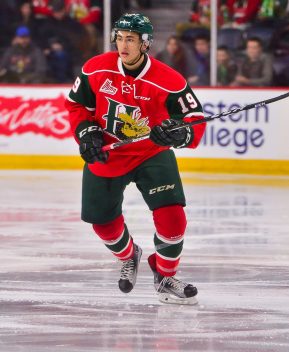



 Team Canada
Team Canada



 Torey Krug suffered a fractured ankle in Game 4 of Boston’s second round series against Tampa Bay and that injury was still a factor when camp started. However, he got into his first preseason game on Wednesday, so it looks like he’ll be fine for the start of the season. His most likely defensive partner is Brandon Carlo, especially after the decision to trade Adam McQuaid to the Rangers on Sept. 11.
Torey Krug suffered a fractured ankle in Game 4 of Boston’s second round series against Tampa Bay and that injury was still a factor when camp started. However, he got into his first preseason game on Wednesday, so it looks like he’ll be fine for the start of the season. His most likely defensive partner is Brandon Carlo, especially after the decision to trade Adam McQuaid to the Rangers on Sept. 11.


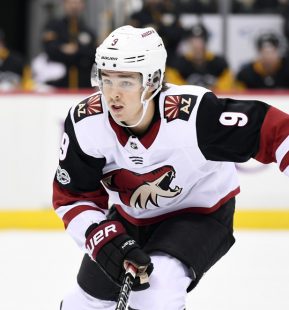










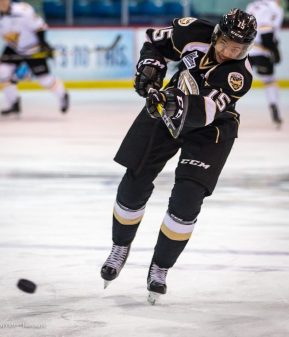

 In an event like this, where all games are regular season games, and there is no tournament feel, there are no winners and losers, although Team USA, Muskegon, Des Moines and Tri-City each won both of their games, while Youngstown, Madison, and Omaha returned home without any points in the standings.
In an event like this, where all games are regular season games, and there is no tournament feel, there are no winners and losers, although Team USA, Muskegon, Des Moines and Tri-City each won both of their games, while Youngstown, Madison, and Omaha returned home without any points in the standings.
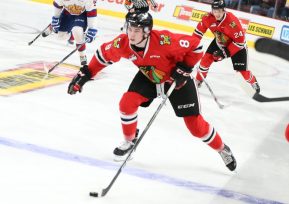
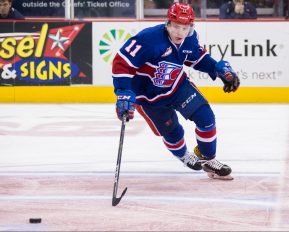
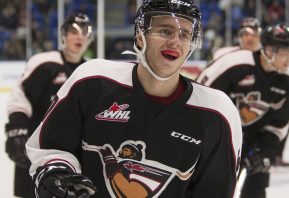
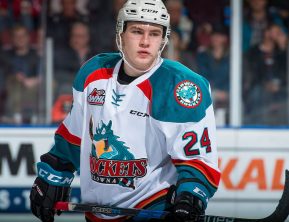

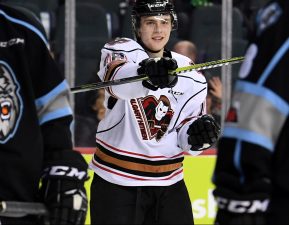
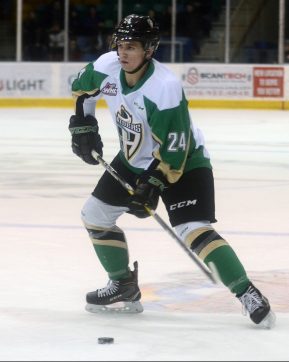

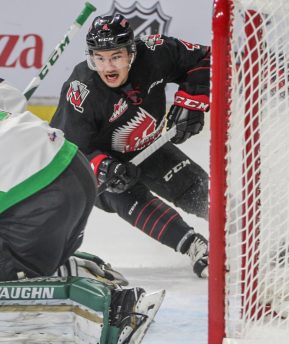
 I had the opportunity to go to Vaasa to watch some of the top teams in the Finnish U20 league (Jr. A SM-liiga). It took me four hours from Helsinki by train to get there early on a Friday morning. Vaasa is a city located on the West coast of Finland, founded by Charles IX, the king of Sweden, in 1611 and it is the 11th oldest city in Finland. It is a smallish, pleasant city with approximately 67,000 inhabitants. It has a long history and beautiful buildings. The weather was fine with the sun shining during most of the weekend. Since I spent most of the time at the arena, I didn't have much time to see the city, however I did get a pretty good impression of the town as I walked the 30-minutes from the hotel to the arena and vice versa.
I had the opportunity to go to Vaasa to watch some of the top teams in the Finnish U20 league (Jr. A SM-liiga). It took me four hours from Helsinki by train to get there early on a Friday morning. Vaasa is a city located on the West coast of Finland, founded by Charles IX, the king of Sweden, in 1611 and it is the 11th oldest city in Finland. It is a smallish, pleasant city with approximately 67,000 inhabitants. It has a long history and beautiful buildings. The weather was fine with the sun shining during most of the weekend. Since I spent most of the time at the arena, I didn't have much time to see the city, however I did get a pretty good impression of the town as I walked the 30-minutes from the hotel to the arena and vice versa. Jokerit winger Aleksi Halme played in only two games. The former USHL forward showed excellent speed, acceleration and great offensive skills. However, his competitiveness off the puck and defensive awareness left a lot to be desired. He did score a nice goal in the last game where he used his quickness to cut to the net. Defenseman Santeri Hatakka was one of the better Jokerit players here and his play improved as the tournament went on. He is more of a defensive defenseman with good four-way mobility, but he also made some good plays with the puck and might have some untapped offensive potential. Besides Hatakka, Jokerit also had several other first-time draft eligible names. One of them who stood out was Rasmus Lahnaviik, who had some good moments. A highly competitive forward, Lahnaviik played a gritty game and did not take a shift off. That said, I don't think his skill level is particularly high and his agility and speed both need work. Third-line center Tomas Totro is also worth mentioning as he was solid, yet not spectacular. A quick skater who reads the game well, Totro has been playing in a defensive role for Jokerit this season.
Jokerit winger Aleksi Halme played in only two games. The former USHL forward showed excellent speed, acceleration and great offensive skills. However, his competitiveness off the puck and defensive awareness left a lot to be desired. He did score a nice goal in the last game where he used his quickness to cut to the net. Defenseman Santeri Hatakka was one of the better Jokerit players here and his play improved as the tournament went on. He is more of a defensive defenseman with good four-way mobility, but he also made some good plays with the puck and might have some untapped offensive potential. Besides Hatakka, Jokerit also had several other first-time draft eligible names. One of them who stood out was Rasmus Lahnaviik, who had some good moments. A highly competitive forward, Lahnaviik played a gritty game and did not take a shift off. That said, I don't think his skill level is particularly high and his agility and speed both need work. Third-line center Tomas Totro is also worth mentioning as he was solid, yet not spectacular. A quick skater who reads the game well, Totro has been playing in a defensive role for Jokerit this season. Kärpät wingers Zdenek Sedlak and Aku Räty both made a strong impact. Sedlak scored three goals and didn't hesitate to put pucks on net. He has looked like a much more well-rounded player this season, playing with more energy and intensity. Sedlak has started to emerge as one of the best goal-scorers in the league and might not be passed over again in the 2019 NHL Dtaft. Räty has high-end puck handling skills and is very crafty offensively. Another positive to note is that he has become physically stronger and that has affected his skating in a positive way. His role increased for the last game after having two good performances. Kärpät defenseman Kalle Loponen is a highly mobile prospect who can create time and space at the blueline with his movement. Even though he isn't that big in stature, he has a strong stick and played a rough game at times. He has a pretty good point shot and while I don't think his puck skills are at the highest level, he can make a good first pass to start the attack.
Kärpät wingers Zdenek Sedlak and Aku Räty both made a strong impact. Sedlak scored three goals and didn't hesitate to put pucks on net. He has looked like a much more well-rounded player this season, playing with more energy and intensity. Sedlak has started to emerge as one of the best goal-scorers in the league and might not be passed over again in the 2019 NHL Dtaft. Räty has high-end puck handling skills and is very crafty offensively. Another positive to note is that he has become physically stronger and that has affected his skating in a positive way. His role increased for the last game after having two good performances. Kärpät defenseman Kalle Loponen is a highly mobile prospect who can create time and space at the blueline with his movement. Even though he isn't that big in stature, he has a strong stick and played a rough game at times. He has a pretty good point shot and while I don't think his puck skills are at the highest level, he can make a good first pass to start the attack.